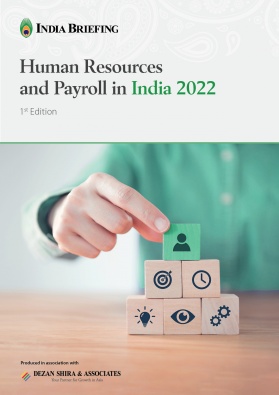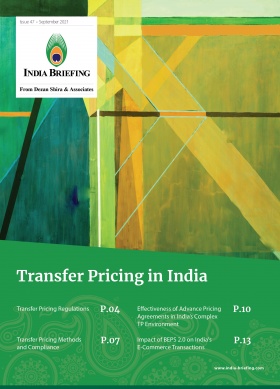Education in Gujarat and Opportunities for UK Investment
Gujarat, like many Indian states, is pressing ahead with reforming and enhancing its education system to provide pupils with the best possible education. India is home to nearly 25 percent of the world’s school children, and around 10 million of them live in the west-coast state. This article explores developments concerning education in Gujarat and investment opportunities for foreign, notably UK entities.
Education is core to the Indian government’s masterplan to promote long-term economic growth. But it also plays a significant and remedial role in balancing the socio-economic fabric of the nation.
By virtue of India’s size, the Ministry of Education (MoE) is responsible for one of the largest education systems on the planet and plays an important role in the life of more than a billion of citizens. In fact, India is home to almost a quarter of the world’s children, so in some respects, the MoE is disproportionately responsible for a planet’s future.
Gujarat is a highly populous state on the western coast of India. It is among the wealthiest five states in the country but that is partially a reflection on the population size – 64 million.
It has a gross state domestic product (GSDP) of INR 19.44 trillion (US$240 billion) and has the country’s 10th-highest GSDP per capita of INR 243,761 (US$3,100). Gujarat ranks 21st among Indian states and union territories in the human development index (HDI) – there are 28 states and 8 Union territories in the country. Yet, Gujarat is considered among the most industrialized states of the nation.
This middling-to-low HDI and sizeable population has engendered considerable interest in the state’s education system. Further, education in Gujarat, like elsewhere in India, has been tested in recent years by the pandemic, which necessitated a movement toward online learning.
But there have also been some major policy changes in recent years, including the National Education Policy (2020 – NEP 2020). The comprehensive framework for elementary education to higher education aims to transform India’s education system by 2030, ensuring that no child misses out on a schooling.
Education in Gujarat
There are approximately 10 million children studying in grades 1 to 12 in Gujarat, according to the Business Standard, citing data from the child tracking system (CTS). Nearly 65 percent of the total students study in the 40,000 government schools in the state and more than 500,000 students in Gujarat study in private schools under the Right to Education Act, 2009.
According to the Gujarat Infrastructure Development Board, the primary and secondary/higher secondary education systems have been able to cope with the demand for education generated in this fast-growing state. The organization highlights that primary education is largely covered by state institutions while there has been considerable growth in the number of private sector organizations in secondary/higher secondary.
Gujarat is also home to some of the prestigious educational institutes of the nation, including the Maharaja Sayajirao University of Baroda – the only English medium university in the state.
According to media reports, Gujarat outperformed other states during the pandemic. The country’s education system has struggled because of the pandemic, with many students falling out of the ambit of formal education due to the requirement to move education online amid Covid-19 restrictions.
However, Gujarat has emerged as one of the better-performing states in India – government schools and grant-in-aid schools have been recognized in particular. CTS data, as cited by the Business Standard, reveals that government schools have become increasingly popular, versus private institutions, since the pandemic. In the past year, out of the 327,000 students that enrolled in schools, 200,000 were admitted to government schools.
More generally, the state government has also set out to transform 20,000 schools into ‘Schools of Excellence’ (SoE). The project is expected to benefit 80 percent of school students in Gujarat and seeks to enhance digital learning facilities to enable pupils to receive grade-appropriate learning.
Education technology developments in Gujarat
Technology is becoming an increasingly important part of learning and can enhance access to education. Developments in education technology in Gujarat have come from both the private and public sector. Gujarat Education Technologies Ltd is an autonomous company of the Government of Gujarat developed with the objective of creating and providing e-learning platforms. The organization will work with government and private schools to build a framework for online education at affordable prices.
But the private sector is also a source of innovation in education technology. Several indigenous education technology startups have received financial backing since the start of the pandemic. Last year, Saarthi Pedagogy raised INR 70 million (US$ 879,000) from Ecosystem Ventures and LetsVenture, JITO Angel Network, and other investors. Ahmedabad LearnVern has also raised nearly US$1 million for its platform offering job-specific courses.
National Education Policy, 2020
The NEP aims to transform the country’s education system by 2030 and focuses on specific areas, such as the internationalization education of India. Foreign universities can now set up campuses in India, while the fees of both private and public universities will be fixed.
In 2020, Gujarat Chief Minister Vijay Rupani said that his government aimed to become the first to implement the NEP and that it would form a task force to create a road map on doing so. However, it is perhaps too soon to recognize any real tangible impact of the policy.
Despite this, there have been some developments. In August 2022, it was announced that 589 new government and grant-in-aid secondary and higher secondary vocational schools would offer 13 new vocational skills to students under the NEP. The classes, including electronics and food processing, were approved by the Government of India’s Samagra Shiksha – a program covering pre-university education.
In January 2022, the state hosted the 10th Vibrant Gujarat Global Summit, which focused on the implementation of the NEP and the internationalization of education. Gujarat Education Minister Jitu Vaghani highlighted the importance of the event in creating new partnerships around the NEP. The conference was attended by the British Council, the Australia India Business Exchange, Institute of International Education.
The education sector has not been a huge recipient of foreign direct investment (FDI) in recent years. In fact, the total amount of FDI inflow into the education sector in India stood at US$2.47 billion from April 2000 to March 2019, according to the Department for Promotion of Industry and Internal Trade (DPIIT). However, the regulatory changes made under the NEP could see this figure increase considerably.
At parliament questions on August 8, the Minister of State for Education, Dr. Subhas Sarkar communicated via written reply: “World-class foreign universities and institutions will be allowed in the GIFT City, Gujarat to offer courses in Financial Management, FinTech, Science, Technology, Engineering and Mathematics free from domestic regulations, except those by International Financial Services Centres Authority (IFSCA) to facilitate availability of high-end human resources for financial services and technology.” As per Dr. Sarkar, the measure – among various others – has been initiated to strengthen the internationalization of higher education – a goal of the NEP.
Investment opportunities for UK players and foreign entities in the Gujarat education system
Modern education began in India under British rule and therefore there remains considerable similarities between the education systems in both countries. The English language is also the primary medium in most private schools.
Many government schools, due to political compulsions, have the state’s official languages as the primary school language – Gujarat is no different. But English remains a core part of education, as does the British-legacy system, and as such, UK institutions could be well positioned to engage and cooperate with Indian institutions for mutual benefit.
Moreover, the size and development of the education system as well as the regulatory changes enacted under the NEP have created a wealth of opportunities for foreign partners and business.
Opportunities include:
- Establishing India-based academic institutions such Harrow International School Shanghai in China or university campuses.
- Creating new partnerships with Indian institutions to enhance cooperation in teaching and research.
- Developing blockchain, Al, predictive analytics with focus on monitoring and evaluation of education standards and attainment.
- Researching and co-delivering short-term skill certificates, co-partnering in creation of online universities.
- Creating and delivering internationalized curricula based on evidence obtained elsewhere in the world.
- Delivering teacher training courses with the aim of ensuring pedagogues at all levels have the capacity to provide the highest quality of learning.
- Developing or translating textbooks in local languages.
There has already been significant collaboration between British and Indian institutions and firms around education. In 2021, Cambridge Partnership for Education signed a Memorandum of Understanding with the Gujarat Secondary and Higher Secondary Education Board. The memorandum highlights possibilities for collaboration throughout the education system in Gujarat, but particularly around the development of curriculum, assessment, teaching and learning resources, and teacher training.
The cooperation goes both ways. As part of a raft of commercial agreements between the UK and India, Boris Johnson’s government said that Indian Edtech startup Leverage Edu would be investing £15 million over the next three years to build its UK presence, creating 150 UK-based jobs. It was also announced that health education firms AT&F Solution and OrthOracle UK had secured a £9.82 million deal to deliver medical training.
It’s also worth noting that many western organizations, such as Reach to Teach, operate in India as charities. However, the presence of these organizations also creates business opportunities for other groups. For example, Reach to Teach, which provides teacher training services in Gujarat, also worked with organizations such as the London School of Economics to enhance their offering in the state. These secondary partnerships are often business centric.
About Us
India Briefing is produced by Dezan Shira & Associates. The firm assists foreign investors throughout Asia from offices across the world, including in Delhi and Mumbai. Readers may write to india@dezshira.com for more support on doing business in in India.
We also maintain offices or have alliance partners assisting foreign investors in Indonesia, Singapore, Vietnam, Philippines, Malaysia, Thailand, Italy, Germany, and the United States, in addition to practices in Bangladesh and Russia.
- Previous Article Deadline for India’s KYC Registration Agencies to Validate KYC Records Extended Till Nov. 2022
- Next Article India’s Drone Industry: Market Prospects, Regulatory Landscape, and Policy Incentives









